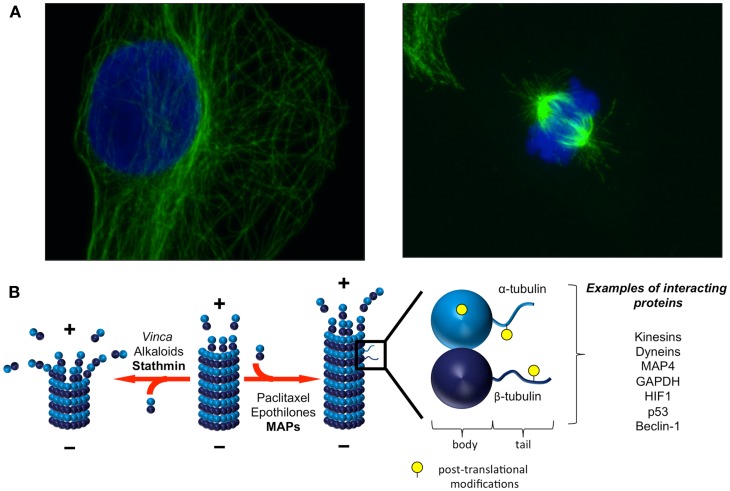Figure 1.
Microtubules are dynamic structures that interact with diverse proteins. (A) Microtubules form a dynamic network and are constantly lengthening and shortening. In interphase [(A), left], microtubules are anchored at the centrosome (minus end) and radiate toward the cell periphery (plus end). The microtubule network undergoes dramatic remodeling throughout the cell cycle, from interphase and through mitosis [(A), right]. Green: α-tubulin, blue: DAPI. Images courtesy of Dr. Sela Po’uha. (B) Heterodimers of α- and β-tubulin associate to form microtubules. The dynamic addition and removal of tubulin heterodimers is faster at microtubule plus ends than at microtubule minus ends. Both endogenous factors and TBAs regulate and influence microtubule dynamics. A variety of proteins involved in cellular homeostatic mechanisms and stress responses also interact with tubulins either in their soluble or polymerized forms. Post-translational modifications on tubulins influence these interactions. Adapted with permission from Macmillan Publishers Ltd: Nature Reviews Molecular Cell Biology [Ref. (9)], Copyright 2011 and Nature Reviews Cancer [Ref. (15)], Copyright 2010.

